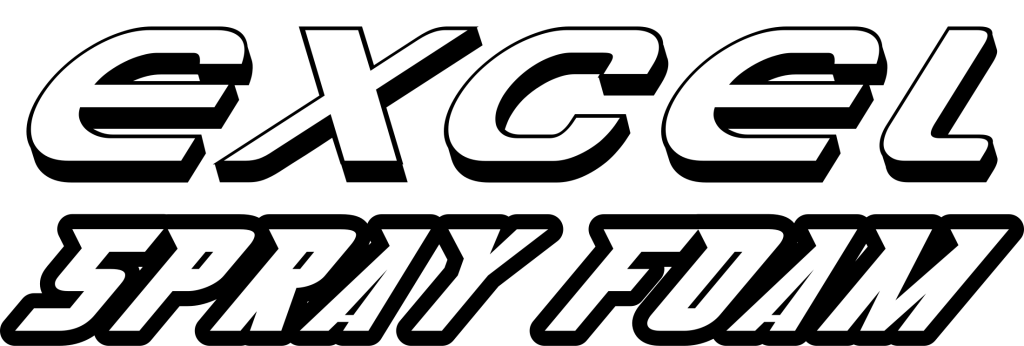When it comes to upgrading your home’s insulation, many homeowners ask, “Do you need to remove insulation before applying spray foam?” At Excel Spray Foam – Plano, we understand that making the right choice for your insulation needs can significantly impact your comfort, energy bills, and home’s overall efficiency. In this comprehensive guide, we’ll cover the ins and outs of whether or not you should remove existing insulation before applying spray foam insulation.
The Basics of Spray Foam Insulation
Before we delve into the question, let’s first review what spray foam insulation is and why it’s so highly regarded:
- Spray foam insulation is a liquid that expands rapidly after application to create a seamless, air-tight barrier.
- It is highly effective at preventing heat transfer, reducing drafts, and providing a superior R-value compared to traditional insulation types.
- Spray foam comes in two primary types: open-cell (more flexible and suitable for interior use) and closed-cell (denser and more rigid, providing better moisture resistance and higher insulation value).
The Importance of Proper Insulation Preparation
One of the critical elements to a successful spray foam insulation job is the condition of the area being insulated. Whether you need to remove existing insulation depends on several factors, including the type of insulation, its condition, and your overall insulation goals.
1. Condition of the Existing Insulation
The most important consideration is whether your current insulation is in good shape:
- Old or Damaged Insulation: If the existing insulation is old, damaged, moldy, or has been compromised by moisture, it is best to remove it before applying spray foam. This is because damaged insulation can lead to issues such as mold growth, poor air quality, and reduced insulation performance. Spray foam insulation can’t effectively adhere to contaminated or damp surfaces, which could compromise its effectiveness and longevity.
- Clean and Dry Insulation: If the current insulation is relatively new and in good condition, it may not need to be removed. However, certain circumstances could still warrant removal or additional preparation.
2. Type of Insulation
Different types of insulation present unique challenges when it comes to applying spray foam:
- Batt or Blanket Insulation: This type, made from fiberglass or other materials, is often installed between wall studs, joists, and rafters. If the batt insulation is still in good shape, it may be left in place. However, if the insulation is compressed or has lost its R-value, removal is recommended.
- Loose-Fill Insulation: Insulation like cellulose or fiberglass that is blown into spaces can be problematic if it’s old or settled. Loose-fill insulation can create gaps that spray foam may not be able to fill effectively, so removing it may be necessary for the best results.
- Foam Board or Rigid Insulation: If you already have foam board insulation in place, it might not need removal. Spray foam can be applied over it if the board is properly secured and not compromised.
3. Application Considerations
Before applying spray foam insulation, there are a few considerations to keep in mind:
- Adhesion and Coverage: For the spray foam to adhere properly, the surface must be clean, dry, and free from contaminants. Old or deteriorated insulation can prevent proper adhesion and lead to an uneven application.
- Space Restrictions: In some cases, existing insulation can limit how much space is available for the spray foam. This can affect the thickness and R-value of the insulation you want to achieve.
Benefits of Removing Old Insulation
Removing existing insulation before applying spray foam can offer several benefits:
1. Ensures Proper Adhesion
For spray foam to create an effective, seamless barrier, it must adhere directly to the surface. Old insulation, especially if it’s dirty or deteriorated, can prevent this adhesion.
2. Prevents Mold and Moisture Issues
If your existing insulation is damp or moldy, leaving it in place can lead to mold growth and reduced indoor air quality. Spray foam insulation acts as a barrier against moisture, but it won’t solve existing moisture problems within the walls.
3. Improves Overall Efficiency
New spray foam insulation, combined with the removal of old, ineffective insulation, can dramatically improve your home’s energy efficiency. This can result in lower energy bills and a more comfortable living environment.
When You Might Not Need to Remove Insulation
In some cases, removal may not be necessary:
- Good Condition: If the current insulation is in good shape and is not causing any issues, it might be left in place.
- Top-Up Insulation: Sometimes, it’s possible to install spray foam over existing insulation if you want to add additional insulation without removing the existing material.
Steps to Take Before Applying Spray Foam
If you’re planning to have spray foam insulation installed, here are the steps we recommend:
- Evaluate the Condition: Inspect the current insulation for damage, moisture, and signs of wear.
- Consult an Expert: Reach out to a professional insulation contractor like Excel Spray Foam – Plano for an assessment. We can help determine whether your existing insulation should be removed or if it can remain in place.
- Prepare the Space: If necessary, remove the old insulation, clean the space, and ensure it’s ready for the new spray foam application.
Why Choose Excel Spray Foam – Plano?
At Excel Spray Foam – Plano, we have the experience and expertise to guide you through every step of your insulation project. Our professional team will assess the condition of your existing insulation, discuss your goals, and ensure your home or business is optimized for maximum comfort and energy efficiency.
Contact Us for Expert Insulation Services
Are you ready to explore the benefits of spray foam insulation? Let the team at Excel Spray Foam – Plano help you make the right decision for your property.Call us today at (469) 209-4005 or email [email protected] to schedule your consultation or learn more about our services. We proudly serve Plano, TX, and the surrounding areas with top-quality insulation solutions.



